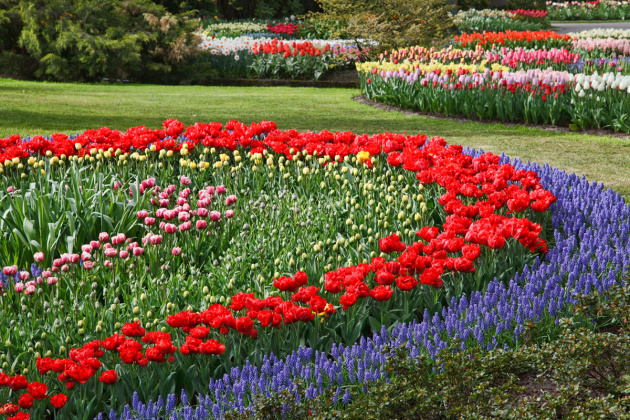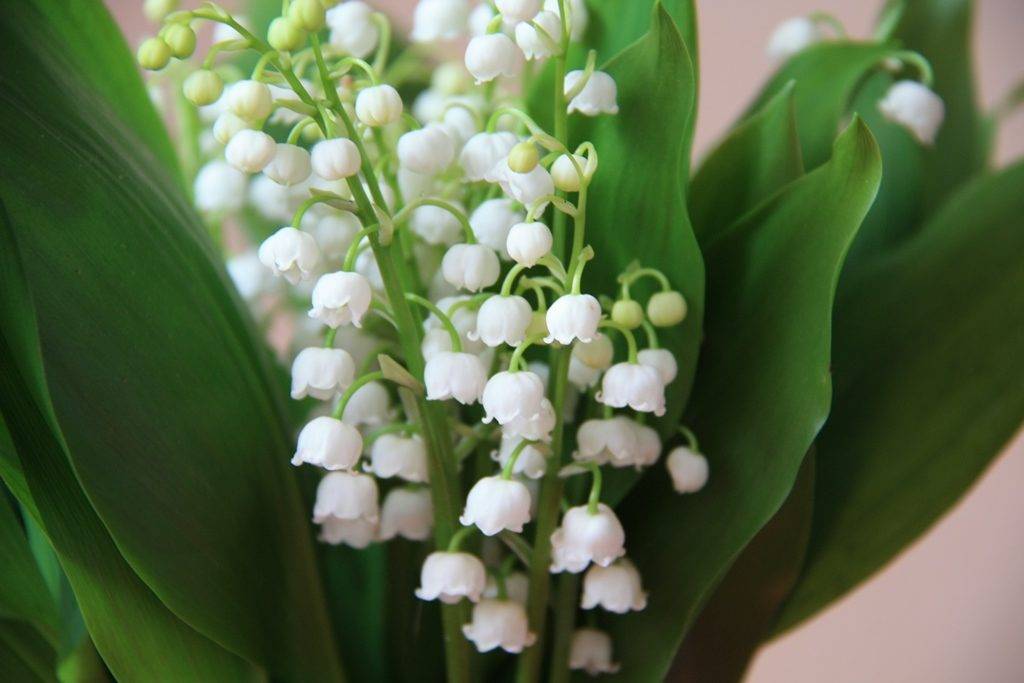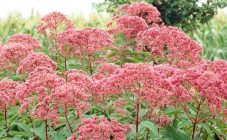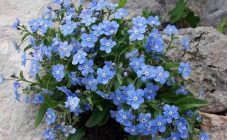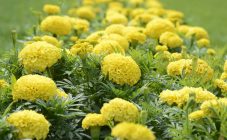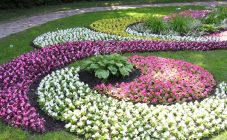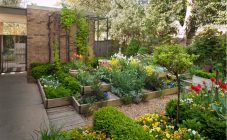Content:
Border flowers are widely used in landscape design. They are used in most cases as flower bed edging. Their meaning can be compared to the frame of any painting, which gives the final look to the work. When decorating paths in the garden with flowers, the principle is similar.
The basics of landscape design
Many of the rules and principles of landscape design associated with border flowers belong to the English gardener Gertrude Jekyll. Her garden with flower beds amazes with exquisite taste and beauty even today.
To make the overall composition fulfill its purpose and look as attractive as possible, when building borders from undersized flowers, you should use the rules proven over the years:
- For the border to become a beautiful edging, the flowers should act as a contrast to the flower bed, lawn or other elements around which it is located.
- Perennial low-growing plants require more root area.
- Identical flowers should be planted in two rows so that no empty windows form in the border.
- When creating your own borders from flowers, you can use arbitrary sizes, but there are standard options: width - 50 cm, height - 40 cm.
- If the curb is used as an addition to tall crops, then higher ones are chosen to create it.
- To complete a flower fence, it is better to take short curb perennials, blooming all summer long, which grow slowly, they will not decay quickly. Such an edging will look well-groomed and beautiful for a long time.
The best representatives of perennials
The main advantages of perennials are their durability and unpretentiousness. Therefore, for the decoration of curb beds, this is an ideal option. For border plantings, it is recommended to select low plants that bloom beautifully and for a long time.
Arabis
Unpretentious plant, up to 20 cm high. It blooms with small flowers of pink, white, purple or blue. The composition of the soil does not matter for growth, but it is important that the site is well lit.
Anemone
A beautiful plant with delicate leaves and large flowers. Suitable for creating tall curbs. Dislikes bright sun and shaded areas. There are varieties and types of completely different and unpredictable colors.
Canna
Another flowering crop designed to create floral border arrangements. It has wide glossy leaves and flowers of orange shades, which outwardly resemble gladioli. A feature of this plant is that the roots are not able to winter in the ground. Therefore, they should be dug up and left indoors for the winter.
Lily of the valley
A well-known delicate beautiful plant with broad shiny leaves and delicate snow-white flowers. Feels great in shaded areas. Flowering disappears very quickly, but the leaves retain their decorative effect until autumn.
Dwarf aster (alpine)
A small bush, up to 30 cm high, is distinguished by beautiful large flowers, which are comparable in beauty to annual asters. Prefers alkaline soils and lighted areas.
Nivyanik (garden chamomile)
A very common plant used for border decoration. Grows well in various conditions, both in the shade and in the sun. The height is different for different varieties - from 30 to 100 cm. The lowest variety is called "curb chamomile". There are not only white flowers, but also pink and cream ones. Best placed on neutral light soils.
Catnip
A herbaceous plant with purple flowers and straight stems, the height of which does not exceed 20-30 cm. It has a long flowering, which begins in June and ends in late autumn (after frost). This plant is unpretentious and easily grown from seed.
Rules for the execution of curbs near the tracks
Over the years of development of landscape design, certain rules for the design of border flower beds have been formed. Most often, the borders near the soda paths are made of 2-3 types of perennial border flowers. Bulbous and small-bulbous perennials are the first to bloom, so they are planted closer to the edge of the path. After them are herbaceous perennials that bloom in summer. Plants are placed along the outer perimeter of the border, which bloom in the autumn.
A more detailed design of the garden path by perennials is as follows:
- In the first row should be placed small-bulbous and bulbous crops (daffodils, snowdrops, crocuses, tulips, hyacinths). You can also place ground-covering creeping flowers here (this is a carnation herb, daisies, subulate phlox, periwinkle, and so on). Here you can place odorous herbs that are used in the form of spices, for example, basil, thyme, mint.
- For the middle row, you should pick up undersized perennials for the border of the garden path. It can be matrix, hosta, dwarf chrysanthemum, badan. During the period of active growth and flowering, they will cover the faded spring crops with their greenery.
- The final row is the statute of undersized ornamental shrubs that bloom in autumn. Their height should not exceed 40 cm so as not to obscure the view of the rest of the landscape compositions located in the summer cottage. For such purposes, garden lingonberry, dwarf barberry, border rose, Japanese spirea are ideal.
Border flower care
In order for the flower bed to please with its beautiful appearance and flowering, proper care should be provided for the crops growing on it. Most often, perennials are unpretentious, so simple procedures will be required:
- watering;
- preventive treatment of plants from diseases and pests;
- mulching and loosening the soil;
- fertilization;
- timely pruning and haircut;
- sheltering plants before winter.
The main problem in maintaining the beauty of border flowers is the rapid thickening due to the growth of perennials. To make the flower garden look beautiful and well-groomed, it is important to carry out timely planting of border flowers.
The beautiful appearance of flower beds near garden paths depends on the correct design, thoughtful arrangement of plants. Color harmony, symmetry of location, well-groomed appearance will ensure the attractiveness of the site, since it is the flower borders that can emphasize the beauty of the garden and give it a finished look.
